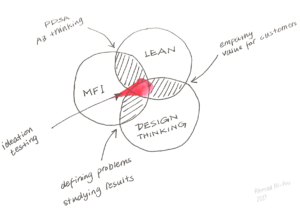Despite all the frequent talk about how important is communication in healthcare, there are still gaps that can be easily and simply prevented.
All the hospitals I visited as a patient or as a companion, even those considered as top-notch in terms of quality and technology, show signs of communication gaps between healthcare professionals themselves, or between them and other supportive staff, more obvious in the outpatient setting.
When you visit a clinic for the first time, the nurse may ask for some info about your chief complaint and past history. You would expect that such information will be relayed somehow in writing or through those sophisticated HIS applications many hospitals deploy nowadays, or at least, through verbal communication. Few minutes later, you step inside and meet the doctor, and he asks you the same questions, clearly because he doesn’t know about your initial conversation, rather than attempting to verify the information. The same is also compounded by other questioning from administrative and other ancillary service staff.
Such redundant questioning and telling the same story 2-3 times in the same visit wastes everyone’s time, and gives the impression that you are not being treated by the same team, if there is any to start with!
So, why can’t nurses, doctors, and others
share information together, and What ROI these expensive information systems provide
if it can’t make communication smoother?
Obviously, working in silos is still a big problem in healthcare, even within a
close outpatient environment, and that would definitely hinder information flow
and coordination of care, leading to the huge waste of resources health care is
plagued with nowadays.
The first impression the patient have would greatly impact the level of trust
in the care. This also indicates that there would be many non-obvious communication
gaps down the care stream that could jeopardize patient safety at any stage.
Let’s imagine a different scenario. You visit a doctor for the first time; the nurse
takes a brief history and records your vital signs. You step in the doctor’s
office and he/she would tell you that you had such and such, then would ask you
to elaborate more. Now that is a good first impression about a collaborative
care team.



